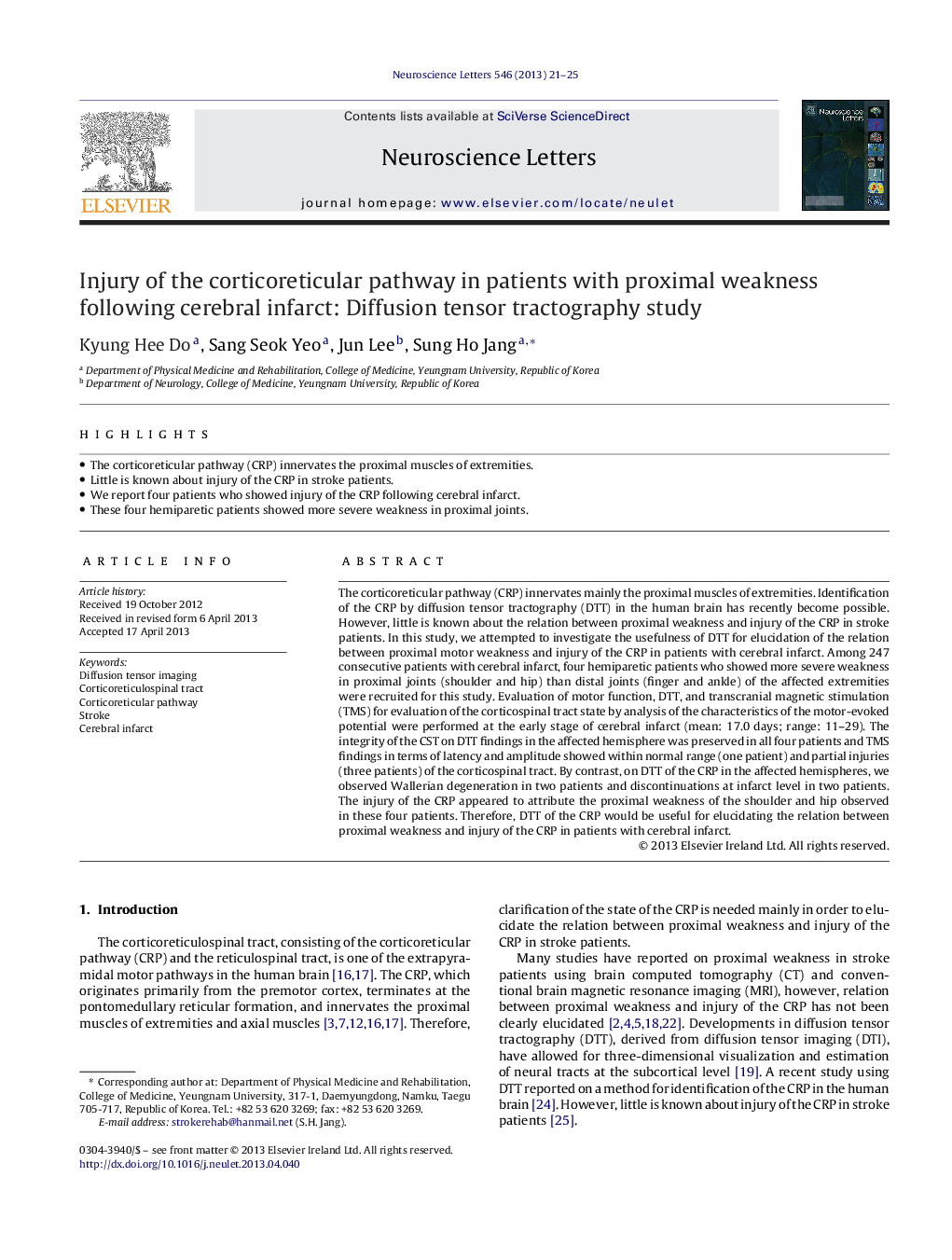| Article ID | Journal | Published Year | Pages | File Type |
|---|---|---|---|---|
| 6283294 | Neuroscience Letters | 2013 | 5 Pages |
Abstract
The corticoreticular pathway (CRP) innervates mainly the proximal muscles of extremities. Identification of the CRP by diffusion tensor tractography (DTT) in the human brain has recently become possible. However, little is known about the relation between proximal weakness and injury of the CRP in stroke patients. In this study, we attempted to investigate the usefulness of DTT for elucidation of the relation between proximal motor weakness and injury of the CRP in patients with cerebral infarct. Among 247 consecutive patients with cerebral infarct, four hemiparetic patients who showed more severe weakness in proximal joints (shoulder and hip) than distal joints (finger and ankle) of the affected extremities were recruited for this study. Evaluation of motor function, DTT, and transcranial magnetic stimulation (TMS) for evaluation of the corticospinal tract state by analysis of the characteristics of the motor-evoked potential were performed at the early stage of cerebral infarct (mean: 17.0 days; range: 11-29). The integrity of the CST on DTT findings in the affected hemisphere was preserved in all four patients and TMS findings in terms of latency and amplitude showed within normal range (one patient) and partial injuries (three patients) of the corticospinal tract. By contrast, on DTT of the CRP in the affected hemispheres, we observed Wallerian degeneration in two patients and discontinuations at infarct level in two patients. The injury of the CRP appeared to attribute the proximal weakness of the shoulder and hip observed in these four patients. Therefore, DTT of the CRP would be useful for elucidating the relation between proximal weakness and injury of the CRP in patients with cerebral infarct.
Related Topics
Life Sciences
Neuroscience
Neuroscience (General)
Authors
Kyung Hee Do, Sang Seok Yeo, Jun Lee, Sung Ho Jang,
